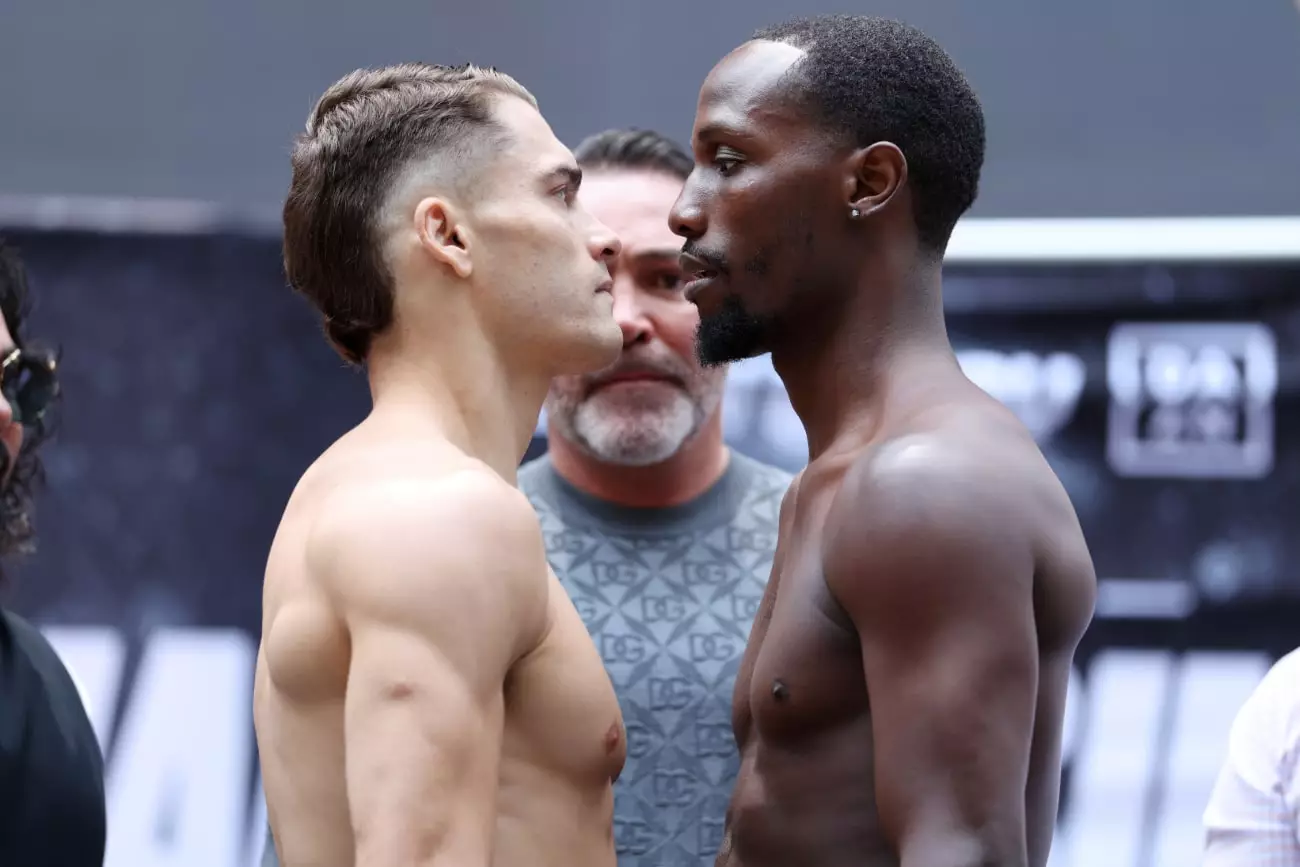This upcoming Saturday night in Chicago promises more than just another boxing match; it symbolizes a contest of contrasting styles and evolving careers. On one side, Oscar Duarte embodies raw, relentless aggression borne from his impressive power and unyielding motor. On the other, Kenneth Sims Jr. represents refined technical mastery and agility, relying on his versatility to outmaneuver opponents. Both fighters weigh 139.8 pounds, levels set for a fiercely contested 12-round bout that could tip the scales of perception and reputation in their respective divisions.
Duarte, at 29, is arguably in the prime of his career. His reputation as a high-volume puncher and relentless pressure fighter has made him a feared opponent. With a knockout rate of over 75%, he’s dangerous early and often. Yet, his style can sometimes be predictable; he seeks openings to unleash heavy, deliberate combinations, often forcing his opponents into uncomfortable exchanges. His youthful vigor and punching power make him a formidable force, and his motor suggests he’s willing to go the distance, pushing through fatigue in pursuit of a stoppage or a dominant victory.
Sims, slightly older at 31, enters this fight as an underdog with notable advantages in skills and movement. His ability to box smoothly, create angles, and avoid unnecessary exchanges can frustrate a relentless attacker like Duarte. Sims’ past fights have shown flashes of brilliance—displays of slick movement and tactical intelligence that can punch holes in an opponent’s game plan. The key for him will be to control the ring, stay mobile, and avoid becoming a stationary target for Duarte’s heavy hands.
Predicting the Outcome: Strategy, Power, and the Weight of Opportunity
Predicting the outcome hinges on how well each fighter leverages their strengths against the other’s vulnerabilities. Duarte’s aggressive style has worked well against opponents with less mobility or stamina, but it can be a double-edged sword, especially if a more elusive boxer can exploit his predictable rushes. His motor suggests he will keep relentless pressure, but if Sims can maintain his distance, he may seize moments to counter and land decisive shots.
Sims must focus on tactical movement—dancing around the ring, using angles, and avoiding prolonged exchanges where Duarte’s power can dominate. As Tim Bradley highlighted, Sims has the technical edge in terms of punch combinations and inside fighting, but he must not become stationary for too long. Duarte’s ability to pour on offense when given openings necessitates constant movement; a static stance could spell doom for the more skillful boxer.
Interestingly, past performances reveal that Sims struggles with maintaining defensive discipline. His recent bout against Kendo Castaneda illustrated this vulnerability—he was pushed backward, forced into brawls, and often had to rely on his resilience to extract a win. That experience underscores the importance of ring intelligence in this duel: staying elusive, converting defensive maneuvers into offensive opportunities, and not allowing Duarte to dictate the pace.
Duarte’s power and relentless style set the stage for a high-octane clash that could favor the Mexican fighter if he presses the attack relentlessly. But if Sims can utilize his mobility to frustrate Duarte’s rhythm, he might just outbox his opponent for a tactical decision or capitalize on a mistake.
Implications Beyond the Ring: A Fight That Reshapes Perception
This fight embodies more than just a stepping stone; it’s a platform where reputations are on the line. For Duarte, a victory could reaffirm his potential as a serious contender willing to take risks against the best, positioning himself for larger fights in the future. For Sims, a win would validate his skill and resilience, perhaps altering how he’s perceived in the division and earning the respect that has sometimes eluded him.
The undercard, featuring Prograis vs. Jo Jo Diaz Jr., adds further intrigue, suggesting this event is a pivotal crossroads for many fighters involved. Every punch thrown, every strategy executed, will carry implications beyond the immediate results—they’ll influence career trajectories, marketability, and the future landscape of their weight classes.
As fans and analysts observe this showdown, it becomes evident that boxing is more than just brute strength or slick technique: it’s a chess match played out in a confined space, with each fighter’s intelligence, stamina, and heart evaluated under relentless pressure. This bout has the makings of a fight that will be remembered—not just for the winner, but for the strategic chess game played out in the ring.


Leave a Reply